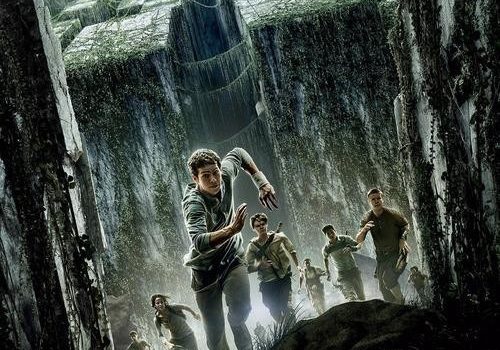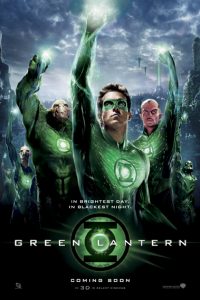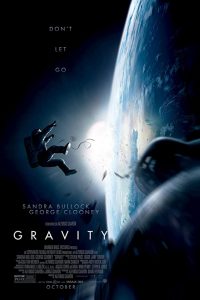“A Hunger for Games?”: A Review of The Maze Runner
by Gary Westfahl
By any reckoning, most of today’s young people have been treated throughout their lives with a tenderness and kindness that is unprecedented in human history. All sorts of once-acceptable adult behaviors now regarded as potentially harmful, ranging from spanking to leaving children alone at home, have been vigorously discouraged or criminalized, and the entire educational system has been revamped to avoid doing any damage to children’s developing sense of self-esteem. In response to all of this solicitous care, teenagers have come to prefer a distinctive sort of narrative: tales of remarkably gifted young people who are abused and tormented by sinister adults seeking to exploit their talents to advance their own ends. Orson Scott Card’s Ender’s Game (1985), an adult novel successfully remarketed as a young adult novel, can be regarded as a pioneering example of such stories; Lois Lowry’s The Giver (1993) offers an unusually subdued and thoughtful variation on the theme; and novels like Suzanne Collins’s The Hunger Games (2008), James Dashner’s The Maze Runner (2009), and their sequels represent the subgenre in its mature, perfected form. And, since these novels have been purchased and read by scores of young readers who are also avid moviegoers, it is hardly surprising that they have all become the basis for recent, big-budget films which I have chosen to review, seeking insights into the psyches of their target audience (past reviews respectively here of Ender’s Game, The Giver, The Hunger Games, and Catching Fire).
In most significant respects, director Wes Ball and writers Noah Oppenheim, Grant Pierce Myers, and T. S. Nowlin have faithfully followed Dashner’s version of this recurrent plot: young men who have lost their memories are transported to a mysterious square enclosure, the Glade, surrounded by a Maze of constantly shifting walls, and they carry on lives of farming and raising animals while a few selected residents, the Runners, keep exploring the Maze, seeking a way to escape while dodging cyborg-like animals called Grievers that can severely wound (“sting”) or kill them. The Maze Runner thus has an ideal premise, which places young protagonists in constant danger while they embark upon a noble quest, and Dashner, like Collins, may have devised his novel and its sequels with a film adaptation in mind. All the filmmakers had to do was to work out explicit visualizations of Dashner’s world and its machinery – rendering the Grievers, for example, as robotic spiders – and find likable actors to play the main heroes – Thomas (Dylan O’Brien), Newt (Thomas Brodie-Sangster), and Alby (Aml Ameen) – and an unlikable actor to play their chief antagonist Gally (Will Poulter). The result of their efforts, as one hardly needs to say about any major film that achieves wide release, is a fast-paced, involving adventure with excellent special effects, and there are even hints, to be discussed, of an imperfectly realized effort to achieve a sort of profundity not found in the novel.
But first, pondering The Maze Runner and similar films, one can venture two conclusions about contemporary young people. First, adults have been generally successful in providing them with a strong, healthy sense of self-esteem. After all, there was a time when authors crafting role models for teenagers, ranging from Eleanor H. Porter’s Pollyanna (1913) to MGM’s Andy Hardy, strived to emphasize how ordinary and typical they were; they realize now that modern readers more readily identify with young geniuses and prodigies. Second, despite the relentless niceness of most of the adults that they interact with, they still feel that the older generation is constantly oppressing and picking on them. Perhaps, as I suggested in reviewing The Hunger Games (2012), they have some legitimate grievances; perhaps, they have been so spoiled by their parents that even the mildest of constraints, from their distorted perspective, can be legitimately likened to the murderous machines of The Maze Runner. Certainly, one must characterize the unseen adults of Dashner’s novel as truly fanatical sadists, since only such individuals would, in a world ravaged by climate change and virulent disease, devote years of effort and billions of dollars to the construction of an enormous torture chamber for teenagers, purportedly as the best way to determine precisely which of numerous promising adolescents are best equipped to save the human race. Yet imagining that a few adults would go to so much trouble simply to bedevil some teenagers also reflects, perversely, an inflated sense of self-esteem.
To transform The Maze Runner into a successful film, the filmmakers recognized that the novel lacked one key ingredient of its form: an onscreen villain to epitomize inimical adults and give audiences someone to despise. The makers of The Giver addressed this deficiency by elevating an innocuous minor character, the Chief Elder, to the status of oppressor-in-chief; in this case, it was necessary to invent an entirely new character to play this role – chief experimenter Dr. Ava Paige (Patricia Clarkson), inserted into the story as much as possible by means of a series of chaotic flashbacks and two final speeches. Surprisingly, the writers actually provided her with a new and slightly more defensible rationale for building the Glade and its surrounding Maze, but she remains thoroughly and necessarily unsympathetic nonetheless.
Other differences between the novel and film are relatively inconsequential. The novel’s Maze, it is ultimately revealed, has a complex, embedded code which the Runners must decipher in order to escape; the film’s Maze has a code as well, but a much simpler one. The film fails to note that the characters’ names are not their own, but rather were given to them by the Creators and taken from history’s greatest thinkers, such as Thomas (Thomas Alva Edison), Gally (Galileo), Newt (Isaac Newton), and Alby (Albert Einstein); perhaps the filmmakers feared that some viewers wouldn’t know who these people were, and they knew they could never mention that the name of Chuck (Blake Cooper) was actually a reference to Charles Darwin, anathema to the 40 percent of Americans who reject the theory of evolution. The novel’s telepathic connection between Thomas and the story’s sole female, Teresa (Kaya Scodelario), is omitted as a needless complication, though this serves to render her more a decorative appendage to the plot than an integral part of it. To provide Runners Thomas and Minho (Ki Hong Lee) with an exciting obstacle course, the Maze now includes an additional feature, free-swinging “blades” that almost entrap them; while the novel states that it never rains in the Glade, the film randomly includes one rainstorm; the film’s characters drink some home-brewed liquor, something perhaps too daring for a young adult novel; and the film’s conclusion, conceptually the same as the novel’s conclusion, differs in almost all of its details.
Yet the film most noticeably diverges from the novel in building upon one curious aspect of Dashner’s story. In a book published in 2009, it had always seemed odd that an envisioned program to test the world’s best and brightest young people would exclusively involve young men – except for one awkwardly introduced woman whose presence is never satisfactorily explained, either in the novel or the film. One would expect that, like the training program in Ender’s Game, both men and women would be well represented in the Glade. Perhaps Dashner felt that, writing for the young adult market, he needed an all-male cast, except for one constantly supervised woman, to ensure worried parents that unsupervised teenagers were not doing nasty things in the bushes at night. However, considering this as the story of a group of young men who are isolated from civilization and forced to build their own society, someone might guess that Dashner was attempting to write his own version of a classic science fiction novel, William Golding’s Lord of the Flies (1954), featuring boys in a similar situation. In actuality, there is little evidence in the novel that this thought ever crossed Dashner’s mind, but it most definitely occurred to the director and writers who adapted his novel to the screen.
Watching The Maze Runner, one first thinks of Lord of the Flies during an early scene, not in the book, where the residents of the Glade gather around a huge fire, bang rhythmically on drums, and engage in playful wrestling, evoking an aura of primitivism that recalls Golding more than Dashner; and the film’s conclusion replaces Dashner’s female rescuer with a male military officer (Don McManus), like the British officer who finally lands on Golding’s island. While the novel does describe Chuck as “chubby,” the film further makes him weak and effeminate, strongly recalling Golding’s Piggy, and he is also the only character who seems about the same age as Golding’s boys, unlike the other, older teenagers in the film. The group’s leader Alby, deputy Newt, and de facto leader Thomas collectively function as the book’s Ralph, creators and maintainers of their makeshift civilization. Gally, who in the novel becomes marginalized and impotent, is reshaped to become the film’s Jack, the militaristic antagonist who eventually usurps the leadership position and attempts to kill his chief opponent, Thomas. Also, while Alby, Next, and Thomas, like Ralph, remain focused on attempting to escape from their environment, the film’s Gally, like Jack, is more committed to remaining where he is, announcing that he “belongs” to the Maze and refusing to join Thomas when he tries to leave.
If this film is actually in dialogue with Lord of the Flies, the filmmakers may have sought to present an optimistic rejoinder to Golding, as its characters (though admittedly a bit older than Golding’s) keep their complex society operating much longer than Golding’s boys, and the threat represented by Gally is ultimately neutralized, since a number of young men resist his tyranny and manage to escape. Yet the Gladers also enjoy special benefits, as they periodically receive needed supplies and are protected against their mechanical enemies by gates that close every night; one doesn’t know how they would have managed if they had been forced to rely entirely upon their own resources. To put the point another way, Golding’s novel was about a real event; the boys were actually stranded on a desert island, and they actually had to fend for themselves without outside assistance or interference. Their experiences, then, represented a genuine test of what young people would do if left to their own devices. In contrast, the young men of The Maze Runner are involved in a simulation of a real event, subject to all sorts of artificial advantages and artificial obstacles, and what they achieved or did not achieve did not represent a true test of their abilities. Rather, like more traditional mazes, it was all a game.
One can therefore characterize the dispute between Thomas and Gally in another way. Thomas and his followers know that they are in a game, being controlled and manipulated by outside observers; they do not enjoy being in a game; and they are determined to escape from the game and return to the real world. But Gally has come to regard the game world as a real world, a place he has adjusted to, and a place where he always wants to remain. Lord of the Flies, then, provides a pessimistic commentary on how people will behave if isolated in a real world: a few may remain civilized, like Ralph, but most will revert to savagery, like Jack and his followers. The Maze Runner provides an optimistic commentary on how people will behave if isolated within an artificial world: a few may grow attached to the illusion and wish to stay within the game forever, like Gally, but most will recoil from being part of a game and will endeavor to escape, like Thomas and his cohorts.
This further suggests a different perspective on the subgenre of films that I have been discussing. Perhaps they are not attacks on evil adults who force their children to play dangerous and unrewarding games; instead, they are attacks on games themselves, games that just happen to be controlled by adults. These films’ message, then, would be that young people must stop playing games, stop immersing themselves in games: Katniss must escape from the second Hunger Games; Thomas and the others must escape from the Maze; Ender must outwit the video game he is playing and, after playing one game actually results in the genocidal destruction of an alien race, must abandon games altogether; and Jonas must escape from the artificially limited society of The Giver and find fulfillment by living in a real human world. One might also mention, among other films, Tron (1982) and Tron: Legacy (2010) (review here), which both involve people who are trapped within video games and strive to get out of them, even though their heroes are adults, not teenagers.
Yet the young people watching these films are considered the most avid game-players in human history, and in contrast to the board games and card games of the past, they regularly play video games and computer games that provide them with increasingly realistic and interactive experiences. Concerned parents and educators worry that young people are playing too many video games; there are reports of individuals who literally died because they could not bring themselves to stop playing an addictive computer game. To get these people away from their consoles and computers and into theatres, it would seem logical for filmmakers to produce films that celebrate and validate games; instead, their films for young viewers are routinely critical of games.
To be sure, one can offer a cynical explanation for this phenomenon: everyone can see that video games are in competition with films, as many people will prefer to spend their weekends playing video games instead of watching movies. So, whenever these people do go to theatres, it would make sense to lure them in with game-like visual experiences while also conveying the subliminal message that games are bad for you. But many young people may themselves be tiring of games, so that these films may be appealing because they are reflecting a stage in the typical adolescent’s life when they realize that there is more to life than playing electronic games and resolve to devote themselves to success in the real world. People who want to keep playing games forever are insane, which is precisely how Teresa describes Gally when he insists that everyone must remain in the Glade. And a rejection of game-playing in favor of involvement in real-world happenings is the invariable story arc of all of these stories’ sequels, including the already-filmed adaptation of the final Hunger Games novel, Mockingjay (2010), its first part to be released in November, and the as-yet unfilmed sequels to Ender’s Game, The Giver, and The Maze Runner. Thus, the characteristic bildungsroman of the computer age may be the story of a young person’s transition from playing games to actively participating in the real world.
What is interesting about these scenarios is that they never replicate the way that most people relate to video games, as something to do occasionally at night or on weekends while they hold steady jobs and carry on normal social lives; instead, the games must always be destroyed and abandoned. Yet to provide Dashner’s saga with a practically-minded coda, the builders of the Glade and the Maze might attempt to recoup the enormous cost of the project by maintaining it as a vacation destination for rich young men and women, who might enjoy roughing it for a while under carefully controlled conditions with the added frisson of dangerous machines and an intriguing puzzle to solve. And a new conclusion to the Hunger Games trilogy might introduce a non-lethal version of the Hunger Games to entertain members of Collins’s post-revolutionary society. To say that games are neither wholly good, nor wholly bad, would seem a commonsensical, ameliorative attitude, but Hollywood storytellers are always driven to extremes: Gally must be killed, instead of being allowed to remain as the overseer of the new Glade Vacation Resort, and the Hunger Games must be eliminated, not reformed. And one must accept the perceived need for clear-cut, unambiguous endings of this kind in order to play the contemporary filmmaking game.









